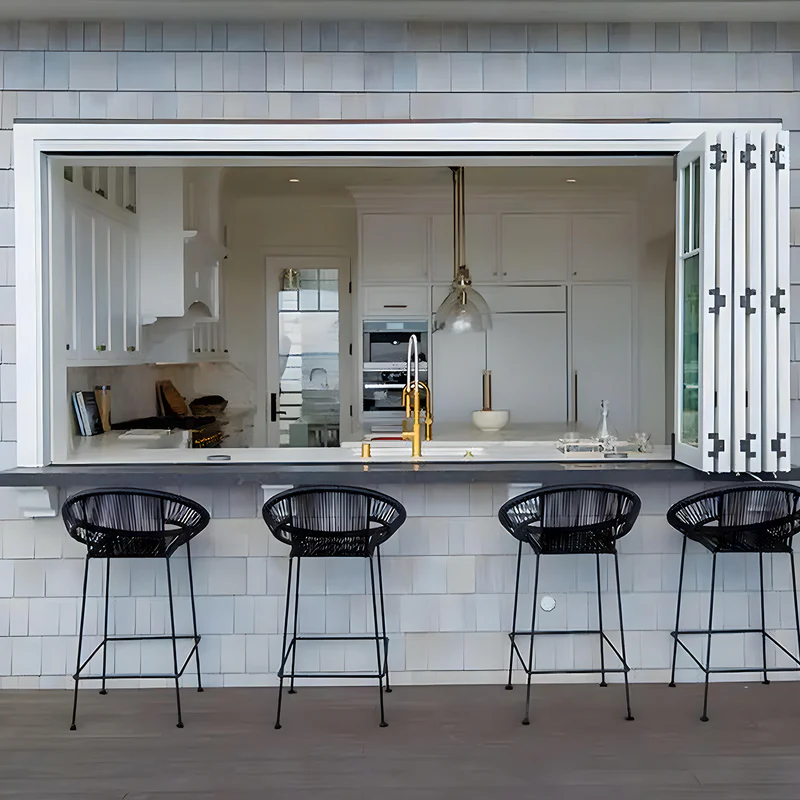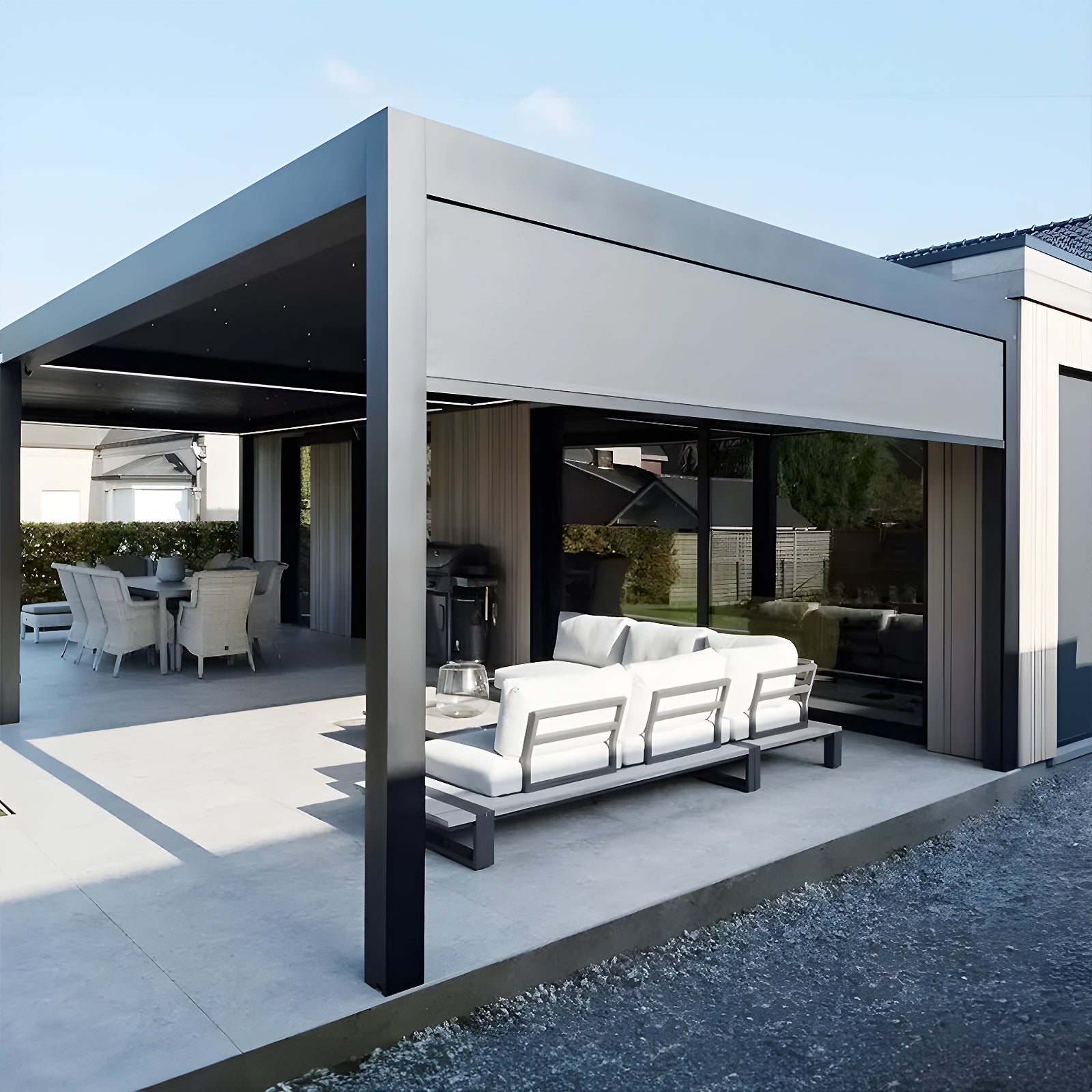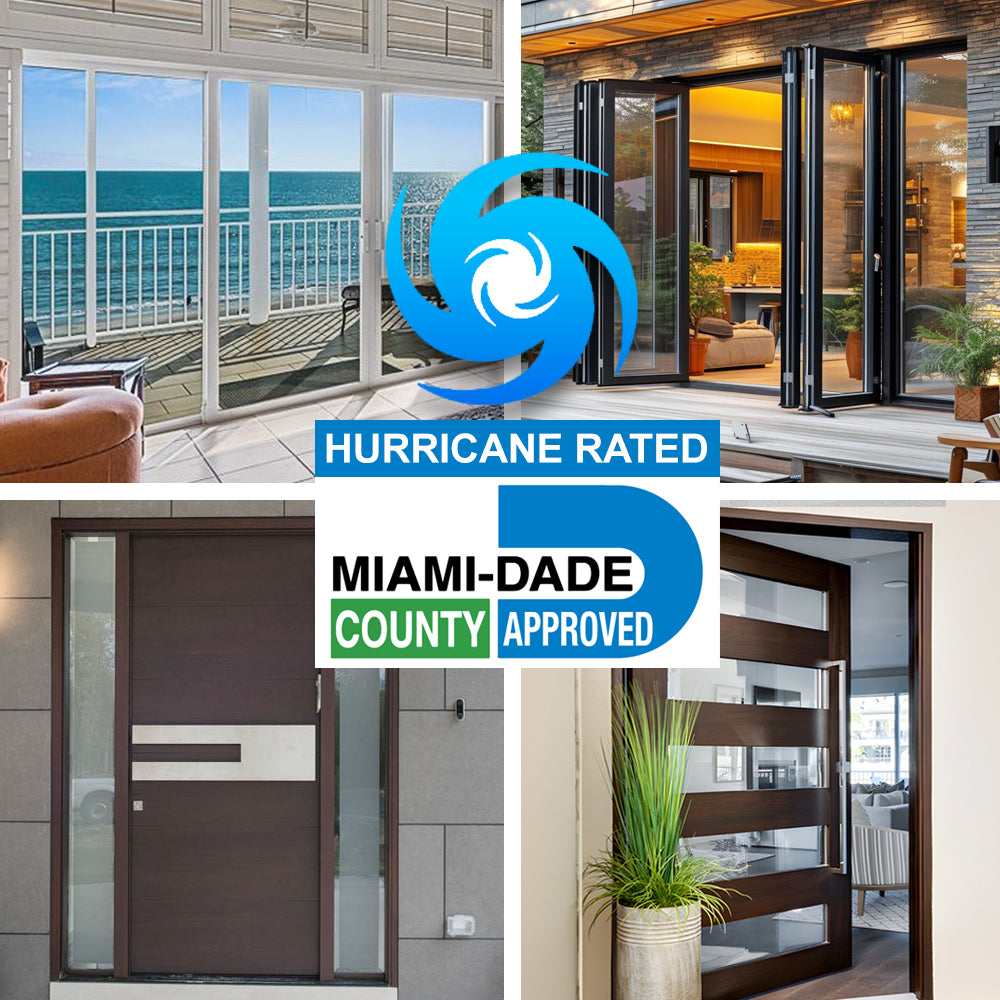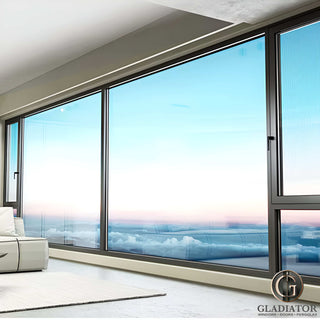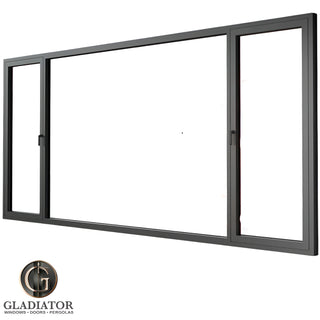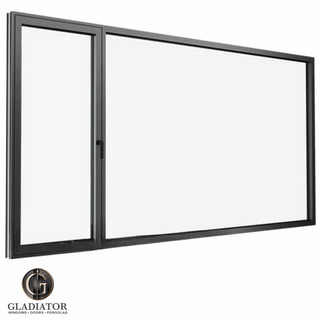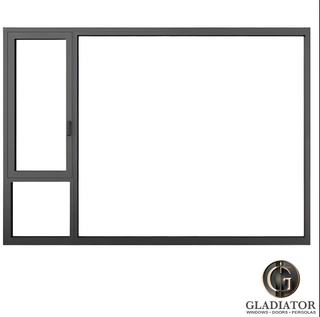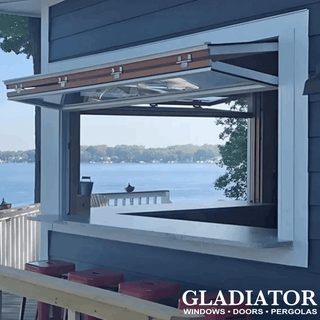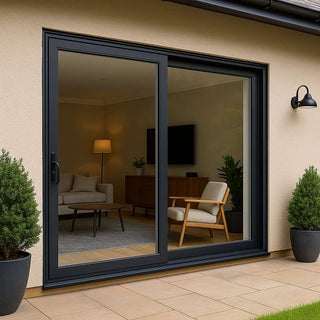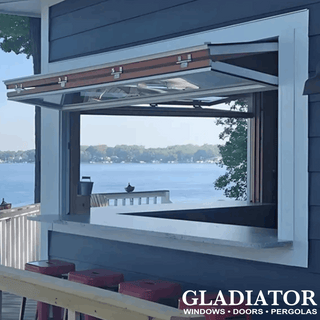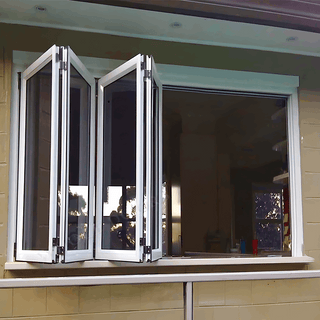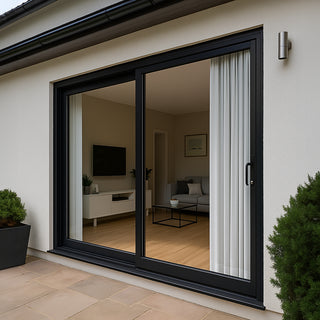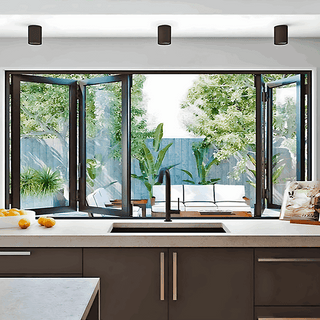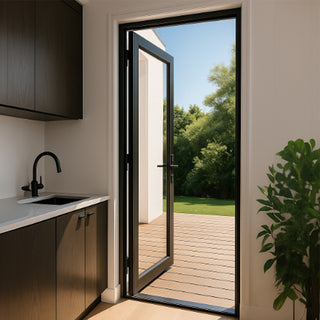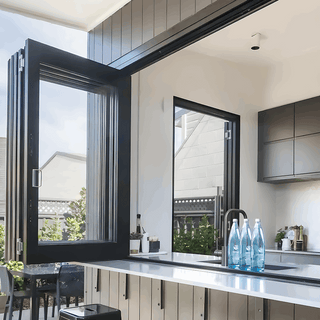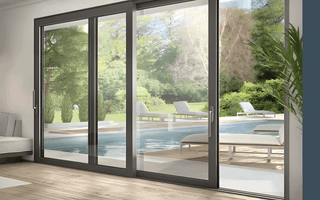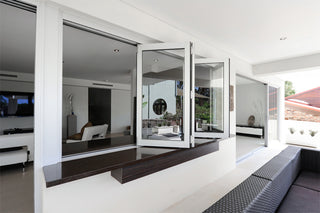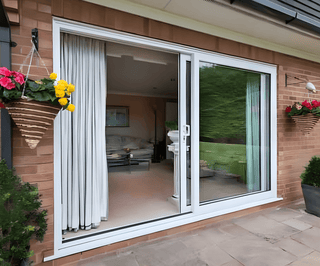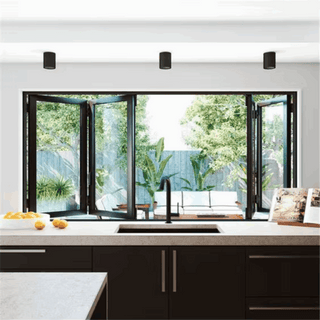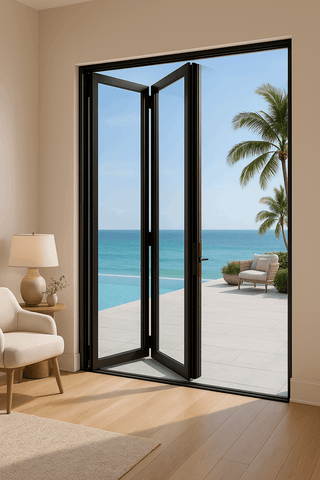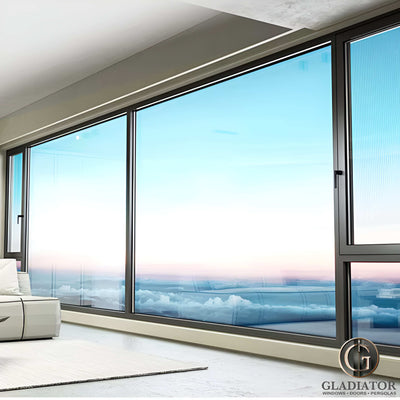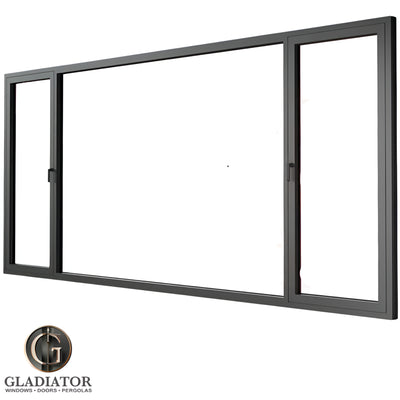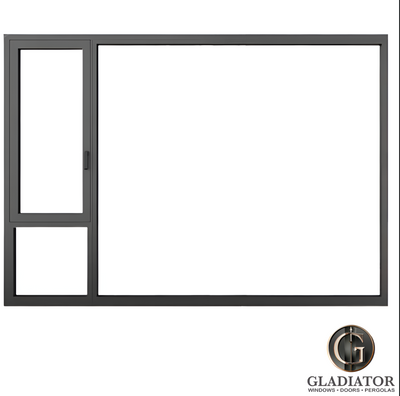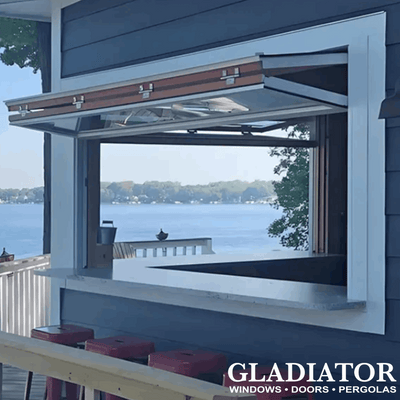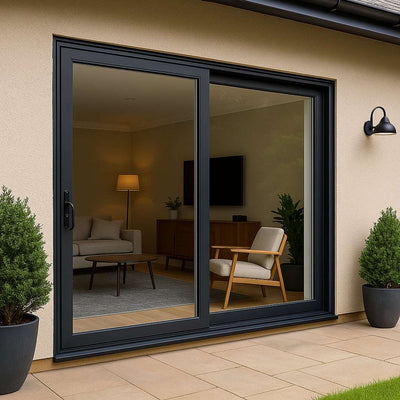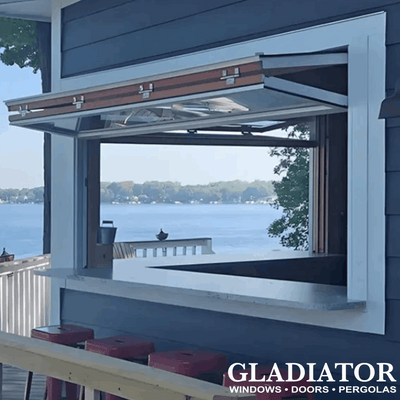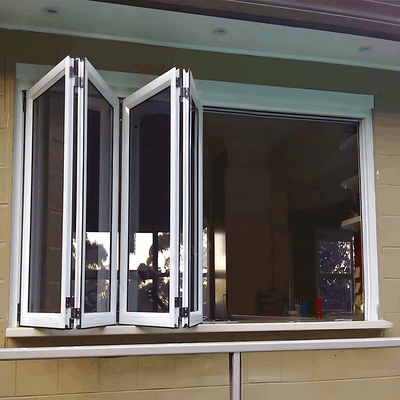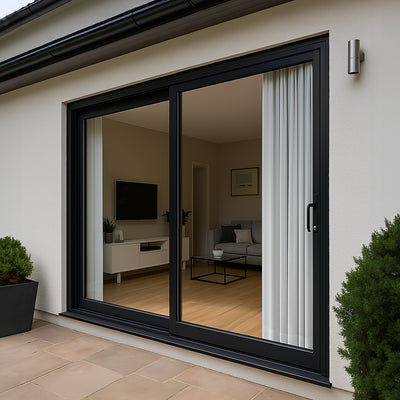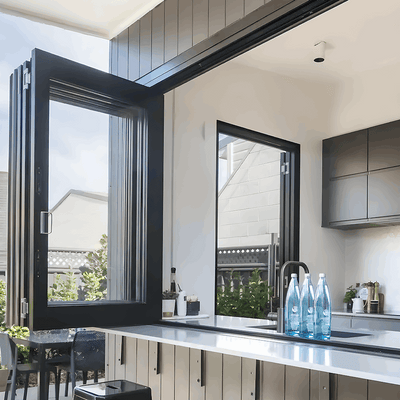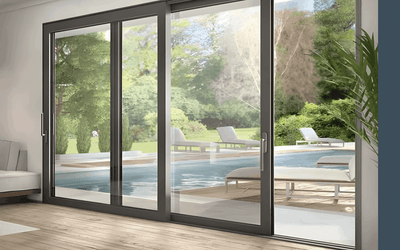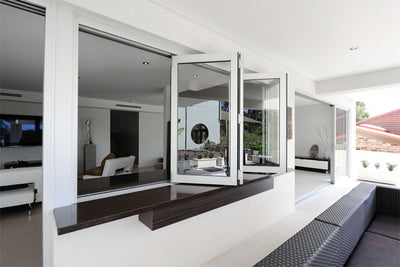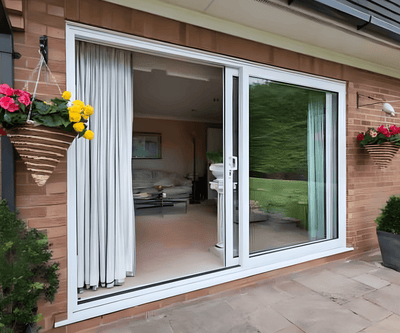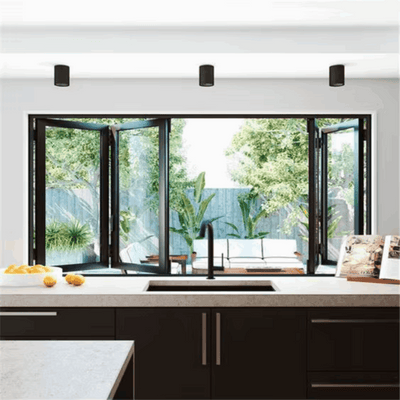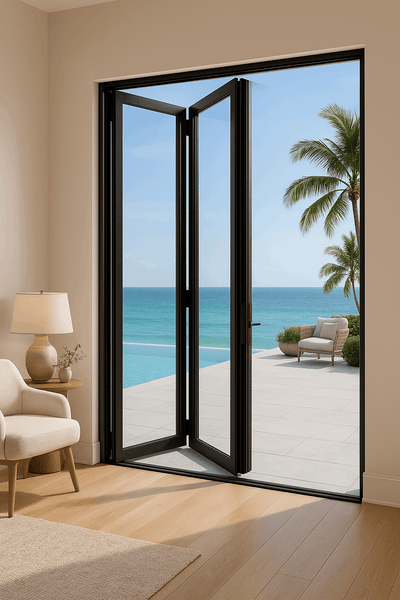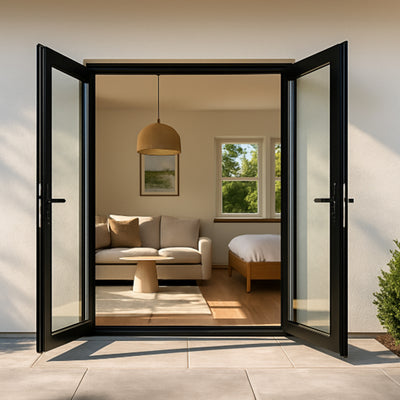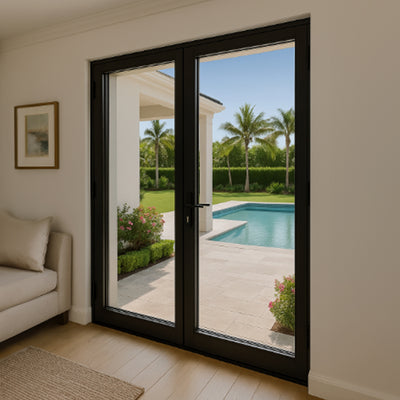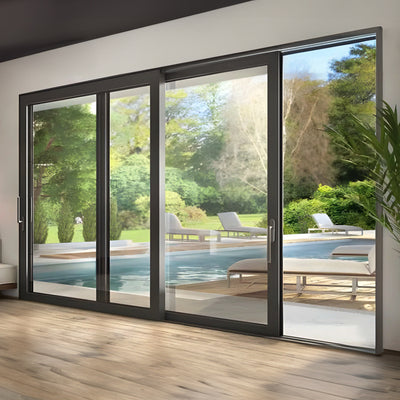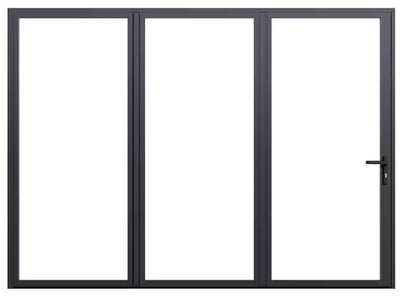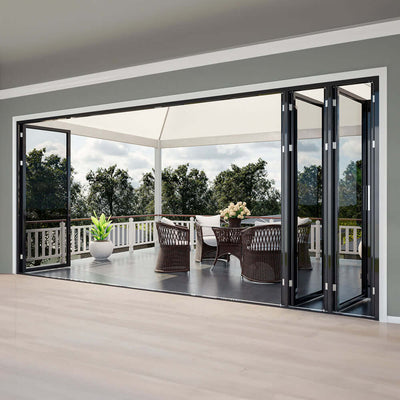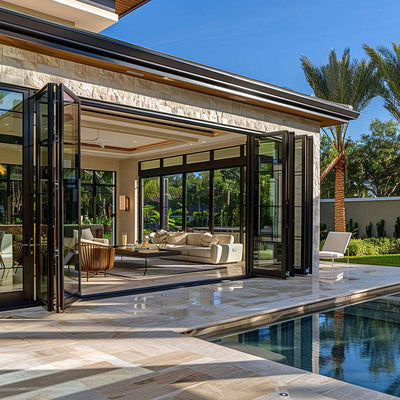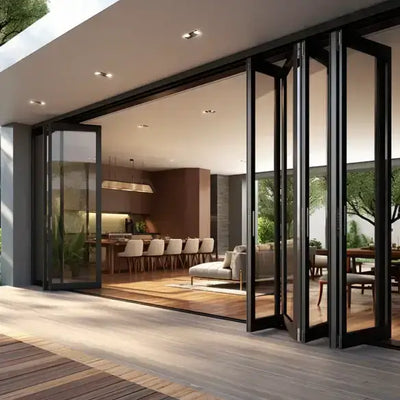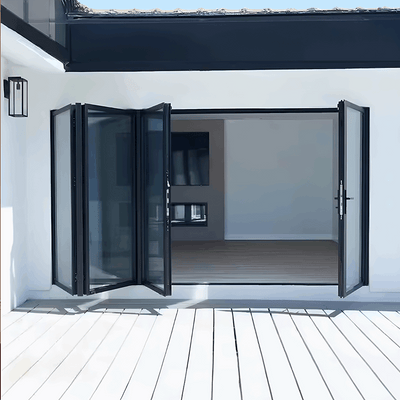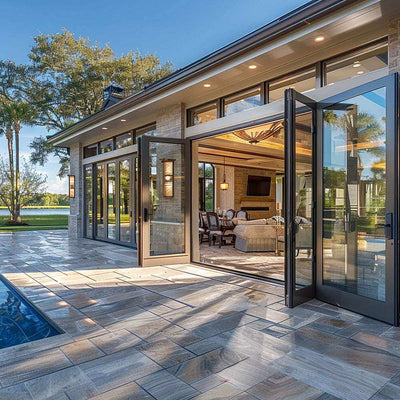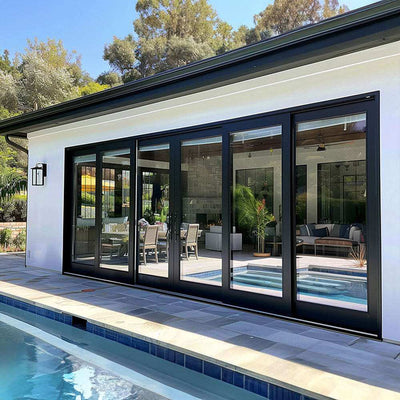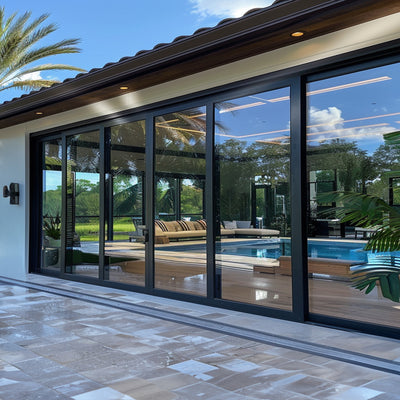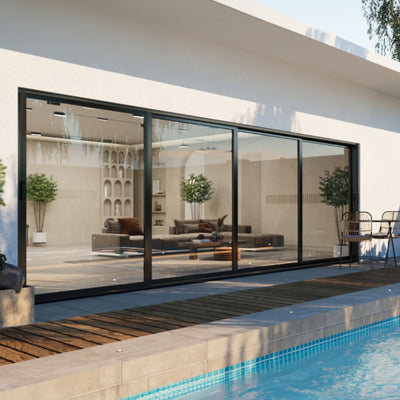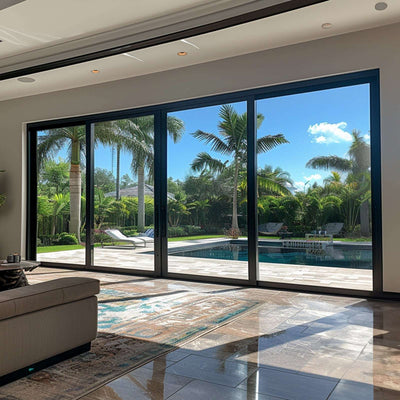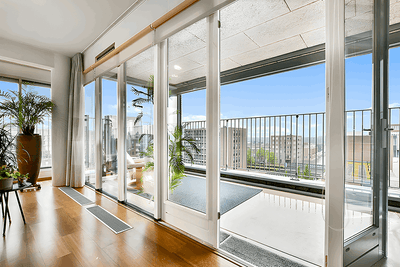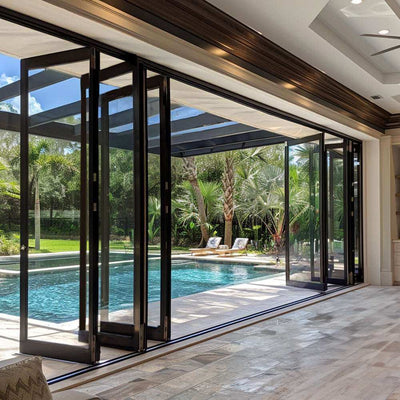Why Your Windows Are Draining Your Energy Budget
Your windows might be secretly increasing your energy bills. Often overlooked, windows play a vital role in maintaining your home's temperature. Inefficient windows lead to higher energy use and bigger heating and cooling costs.
How Heat Escapes Through Windows
Heat transfer happens in three ways: conduction, convection, and radiation. Conduction is heat transfer through direct contact. Convection is heat transfer through the movement of fluids, like air. Radiation is heat transfer through electromagnetic waves. All three contribute to heat escaping through windows. For instance, single-pane windows easily conduct heat. Air leaks around the frame also create convective currents, worsening heat loss.
The Problem With Single-Pane Windows
Single-pane windows offer little resistance to heat flow. They conduct heat easily, making them very inefficient. It's like wearing a thin t-shirt on a freezing day. This is why older homes with single-pane windows often feel drafty and need more energy to stay comfortable. Check out this guide on how to stop window drafts.
The Growing Demand for Window Insulation
Window insulation is increasingly important as homeowners look to save energy and money. The market for window insulation kits is growing rapidly. The global market, valued at about $159 million, is expected to reach $238 million by 2031. This represents a 6.0% compound annual growth rate (CAGR) from 2025 to 2031. You can find more statistics here. This growth shows the increasing need for effective window insulation. Investing in proper window insulation offers significant long-term savings.
DIY Solutions That Actually Deliver Results
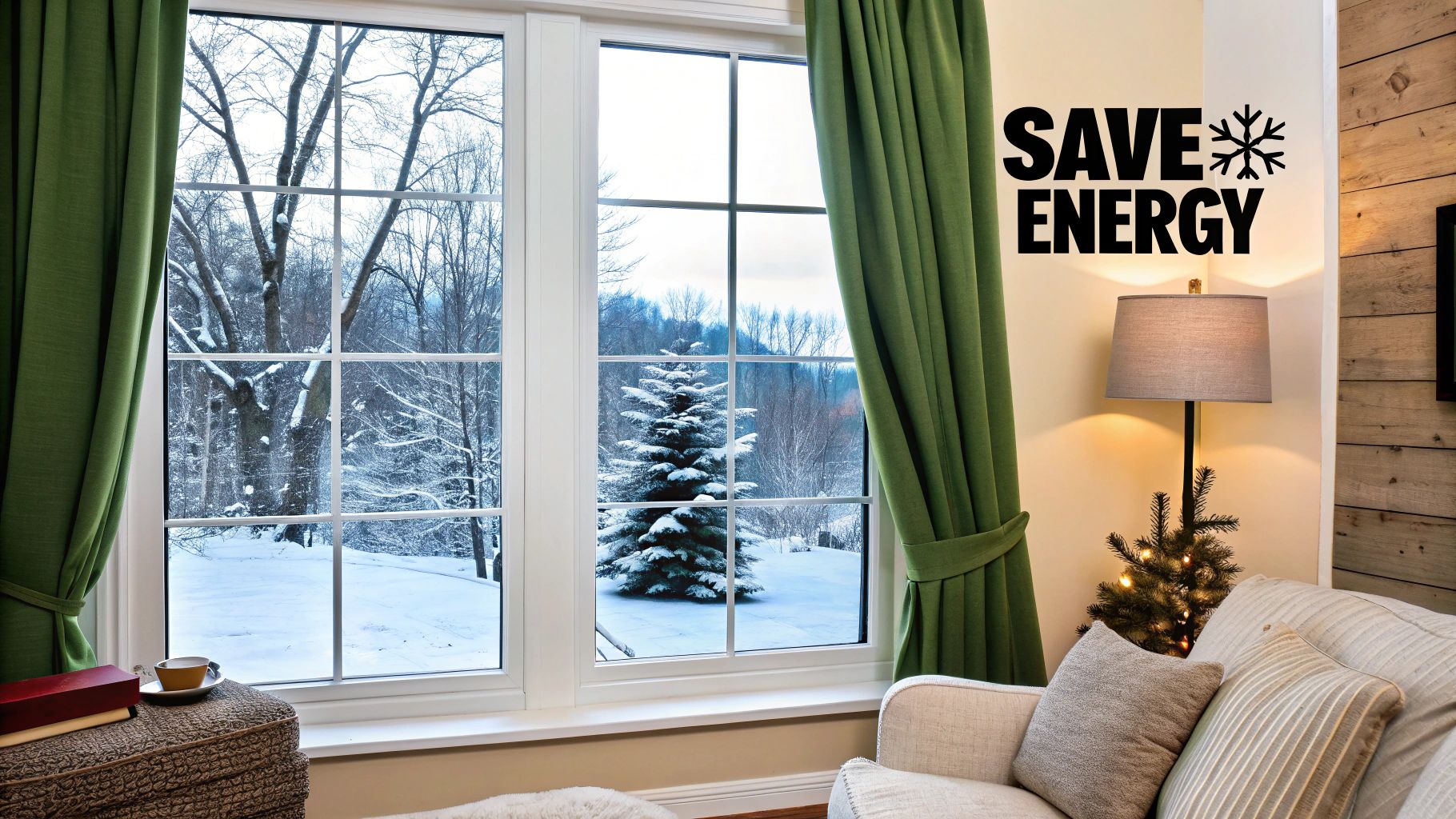
Now that we know how inefficient windows impact our homes, let's explore some do-it-yourself fixes. These practical methods are known to enhance insulation, cutting down on energy loss. They're also budget-friendly, putting you in charge of your home's efficiency.
Weatherstripping: Sealing the Gaps
Weatherstripping is a straightforward yet effective way to seal those pesky air leaks around windows. It involves sticking foam, rubber, or felt strips to the frames where they meet the sashes. It's like adding a gasket, creating a tight seal against drafts. Applying weatherstripping can reduce air leakage by up to 30%.
- Types of weatherstripping: Common materials include foam, felt, rubber, V-seal (vinyl), and silicone.
- Choosing the right type: Consider the gap size and the window frame material.
- Application: Clean the surface thoroughly before applying the weatherstripping to ensure it sticks properly. For more detailed guidance, check out this helpful resource: How to master window insulation with DIY hacks.
Caulking: A Permanent Seal
Caulking is a longer-lasting fix for sealing gaps and cracks. It involves using a flexible sealant to fill any openings where air might sneak in. Caulking is key for stopping air and moisture, protecting your home from drafts and water damage.
- Choosing the right caulk: Opt for exterior-grade, paintable caulk that's weather-resistant. Silicone caulk is a versatile choice.
- Application: Apply a smooth, consistent bead of caulk, ensuring full coverage of the gap.
- Smoothing: Use a wet finger or a caulk tool to create a neat finish.
Draft Stoppers: Simple and Effective
Draft stoppers are an inexpensive and simple way to block drafts at the base of windows. These fabric tubes or filled socks sit along the window sill, preventing cold air from seeping in. They can make a noticeable difference, particularly with older windows that have larger gaps. Reducing energy consumption is a key benefit of insulating windows. Find more energy-saving tips here: Save energy this Christmas.
- DIY draft stoppers: Repurpose old fabric scraps and fillings like rice or beans to make your own.
- Placement: Ensure the draft stoppers are snug against the bottom of the window for effective blocking.
- Advantages: They're easy to remove and store when not needed.
These DIY solutions can greatly improve your window insulation, resulting in a warmer home, more comfort, and lower energy bills. However, in some cases, you might need more advanced solutions.
Window Film Solutions: Maximum Impact, Minimal Investment
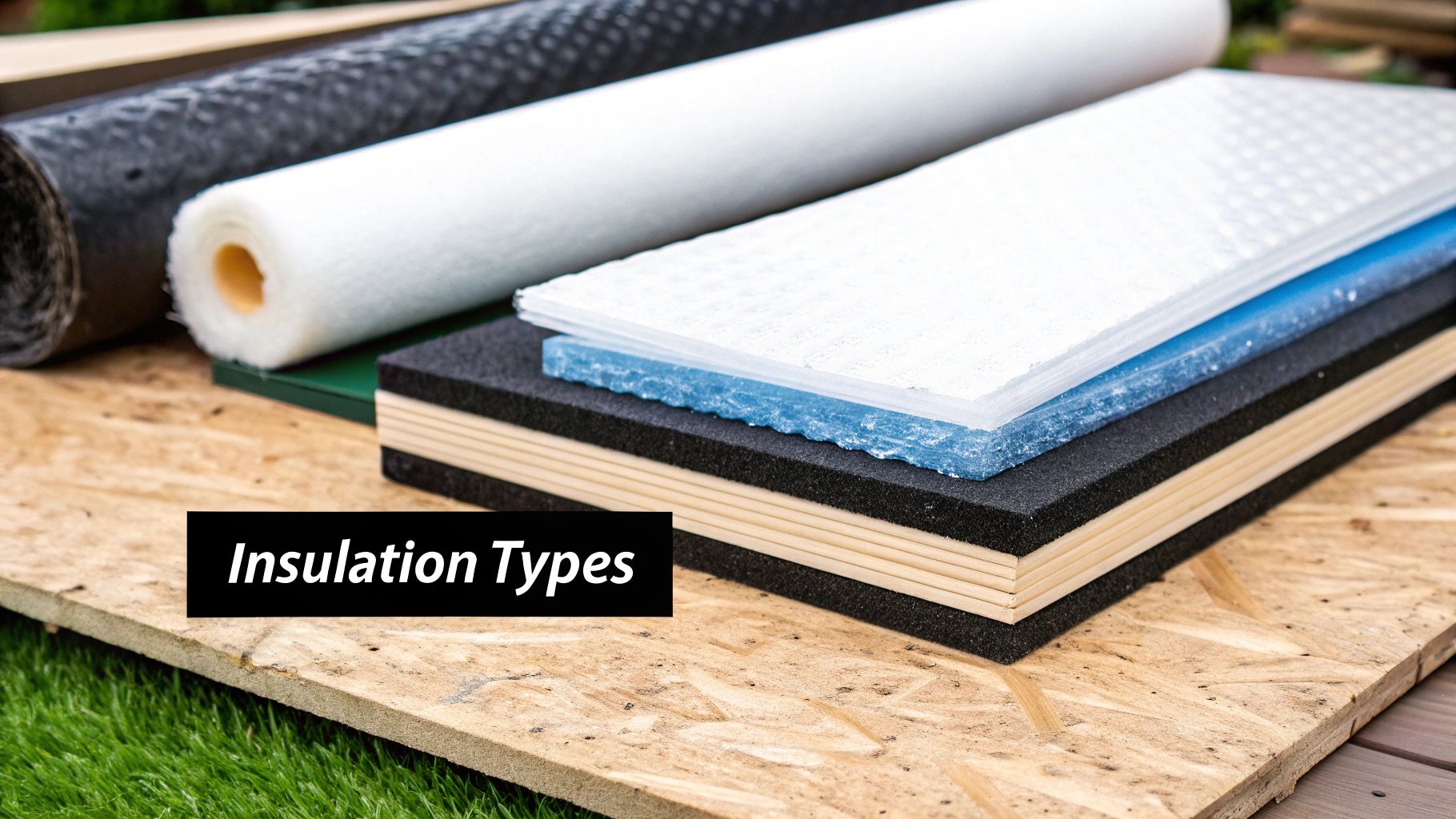
Looking beyond simple DIY window insulation fixes like weatherstripping and caulking? Window films offer a compelling balance of cost-effectiveness and energy savings. These thin, transparent sheets adhere directly to your existing windows, boosting their insulation power without the expense of full replacements. This allows you to enjoy noticeable energy savings without breaking the bank.
Types of Window Film
Window films come in a variety of types, each designed with specific benefits in mind:
-
Solar Control Films: Ideal for sunny climates, these films reflect sunlight, keeping your home cooler in the summer and reducing the workload on your air conditioner.
-
Low-E (Low-Emissivity) Films: Perfect for retaining heat during colder months, Low-E films reflect infrared radiation back into the room, minimizing heat loss and keeping your home warmer.
-
Insulating Films: Offering a combination of solar control and low-E properties, these films deliver year-round benefits and are suitable for various climates.
-
Basic Shrink Films: As the most budget-friendly option, these films create an additional air barrier against the window, providing a quick and easy insulation boost.
Installation and Maintenance
Proper installation is key to maximizing the benefits of your window film. Follow these steps for a smooth and effective application:
-
Clean the Window: Use a standard glass cleaner to thoroughly clean the window surface and ensure it's completely dry.
-
Cut the Film: Measure your window pane carefully and cut the film slightly larger to allow for adjustments.
-
Apply the Film: Peel off the backing and apply the film to the window, smoothing out air bubbles with a squeegee or a credit card.
-
Trim the Excess: Use a sharp utility knife to carefully trim away any excess film around the window edges.
Maintaining your window film is straightforward. Clean with a mild soap and water solution, avoiding abrasive cleaners that can scratch the film's surface. With proper care, window film can last for years, providing consistent energy savings. The global building window insulation film market is experiencing significant growth, driven by the increasing demand for cost-effective energy solutions. Valued at $1,397 million in recent years, this market is projected to reach $1,898 million by 2031, demonstrating a CAGR of 4.6%. Learn more about this growth in the window film market report. This upward trend highlights the growing popularity of window film as a practical and affordable way to insulate windows effectively, especially in regions with abundant sunlight.
When to Consider Professional Window Upgrades
DIY solutions can offer noticeable improvements to window insulation. However, there's a point where professional upgrades deliver superior, long-term value. Knowing when to transition from DIY to professional help is essential for maximizing your investment and achieving optimal energy efficiency.
Recognizing the Limits of DIY
DIY methods are great for tackling minor air leaks and boosting existing window performance. But they fall short when dealing with core issues like outdated window technology or significantly damaged frames. For instance, if you have single-pane windows or substantial structural damage, DIY insulation will provide only minimal improvement. In these situations, professional window replacement is often the most effective approach.
The Benefits of Professional Window Replacement
Investing in new, energy-efficient windows provides a range of advantages:
- Significant Energy Savings: Modern windows, particularly double- or triple-pane options with Low-E coatings, drastically reduce heat transfer.
- Enhanced Comfort: New windows minimize drafts, maintaining a consistent indoor temperature.
- Increased Home Value: Energy-efficient windows are a desirable selling point for potential homebuyers.
- Noise Reduction: Modern windows offer excellent sound insulation, creating a more peaceful home. For more information, check out this article on energy efficient window replacement solutions.
Understanding Window Technologies
The variety of window technologies can seem daunting. Here’s a quick overview of key features:
- Double-Pane vs. Triple-Pane Windows: Double-pane windows strike a balance between cost and performance. Triple-pane windows maximize insulation, making them ideal for colder climates.
- Frame Materials: Vinyl, wood, and fiberglass each offer unique advantages and disadvantages regarding insulation, maintenance, and cost.
- Glazing Technologies: Low-E coatings and gas fills between panes significantly improve energy efficiency.
Evaluating Contractors and Timelines
Selecting the right contractor is vital for a successful window replacement project. Inquire about their experience, certifications, and warranties. Get multiple quotes to compare pricing and project timelines. The market for insulating glass windows is expanding rapidly due to increased demand for energy-efficient solutions. In 2024, the global market value was $14.04 billion and is expected to reach $19.73 billion by 2029, growing at a CAGR of 7.3%. Project timelines typically depend on the project's scope and the contractor's availability. Careful planning and open communication with your contractor are essential for a smooth and efficient process.

The Real Numbers: Costs Versus Long-Term Savings
Insulating your windows can significantly reduce energy costs, but the initial investment varies depending on the method. Understanding the financial implications of each option is crucial for making smart decisions that align with your budget and long-term energy goals. For a deeper dive into the cost-effectiveness of energy-efficient windows, check out this article.
Evaluating Costs and Payback Periods
Let's examine the financial aspects of different window insulation methods. From simple DIY projects to professional replacements, each option balances upfront costs with potential long-term savings.
-
DIY Methods: Weatherstripping, caulking, and draft stoppers are the most budget-friendly options, often costing only a few dollars per window. While energy savings may be less substantial than other methods, the quick return on investment makes them appealing for budget-conscious homeowners.
-
Window Films: This mid-range investment offers significant energy savings without the hefty price tag of window replacements. While the initial cost is higher than DIY methods, the improved insulation and relatively short payback period make window films an attractive option.
-
Professional Window Replacements: This carries the highest upfront cost, but often provides the greatest long-term energy savings. The significant reduction in energy bills can justify the investment, especially for older homes with inefficient windows.
To help illustrate the costs and savings associated with each method, let's take a look at the following table:
Window Insulation Methods: Cost vs. Savings Comparison Detailed comparison of different window insulation methods showing upfront costs, installation difficulty, energy savings potential, and payback periods
| Method | Cost Range | DIY Difficulty | Energy Savings | Payback Period |
|---|---|---|---|---|
| Weatherstripping/Caulking | $5-$20 per window | Easy | 5%-15% | Less than 1 year |
| Draft Stoppers | $10-$30 per window | Easy | 5%-10% | Less than 1 year |
| Window Films | $5-$10 per square foot | Medium | 10%-20% | 1-3 years |
| New Energy Efficient Windows | $300-$1000 per window | Professional Installation Required | 25%-50% | 5-15 years |
As the table shows, while new windows offer the best long-term energy savings, DIY methods like weatherstripping and window films provide a much quicker return on investment.

The infographic further emphasizes this point, visually highlighting the trade-off between initial investment and long-term return for various window insulation strategies.
Regional Climate Considerations
Your local climate significantly impacts how quickly you recoup your window insulation investment. Homeowners in areas with extreme temperatures will likely see faster returns due to increased heating and cooling needs. This translates to higher energy savings after insulation.
Rebates and Tax Incentives
Many regions offer rebates and tax incentives for energy-efficient upgrades, including window insulation. These programs can substantially offset upfront costs. Researching available incentives can enhance the financial benefits of insulating your windows.
Case Studies and Real-World Examples
Real-world examples offer valuable insights into the financial impact of window insulation. Many homeowners track energy bills before and after implementing insulation, revealing actual energy savings and realistic payback periods. This article on window condensation and DIY insulation provides some additional perspectives. By carefully considering costs, payback periods, and incentives, you can choose the best window insulation strategy for your budget and maximize long-term energy savings.
Smart Timing and Maintenance for Peak Performance
Properly insulating your windows isn't a set-it-and-forget-it endeavor. It involves thoughtful planning and consistent upkeep. Selecting the right time for installation and diligently maintaining your chosen insulation methods are vital for getting the most out of your energy efficiency and extending the life of your improvements.
Optimal Installation Times
Different insulation methods have optimal installation times. For temporary insulation options, like window film or interior storm windows, late fall is generally the best time, just before temperatures consistently decrease. This prepares your windows for the coming winter.
For more permanent solutions, such as replacing windows entirely or adding exterior storm windows, spring or fall offer milder weather, which is much better for exterior work. This simplifies installation and minimizes disruptions to your daily life.
Maintenance Checklists and Schedules
Regular maintenance is key to keeping your window insulation in top shape. Here’s a simple checklist to follow:
- Weatherstripping: Inspect yearly for any wear and tear. Replace any damaged or brittle sections immediately.
- Caulking: Inspect annually for cracks or gaps. Reapply caulk where needed to maintain a good seal.
- Window Film: Clean regularly with a mild soap and water solution. Steer clear of harsh chemicals that could damage the film.
- Storm Windows: Clean both the interior and exterior surfaces annually. Check for any signs of damage and make any necessary repairs.
For more tips on preparing for winter, check out this helpful resource: How to Winterize Windows: Easy Tips to Save Energy.
Recognizing Signs of Needed Repairs or Upgrades
Knowing when to repair or replace your window insulation is important. Here are some signs to watch for:
- Drafts: Feeling cold air around your windows, even when closed, indicates air leaks. This usually suggests the need for new weatherstripping or caulking.
- Condensation: Excessive condensation can point to a problem with the window seal or the insulation itself.
- Damaged Film: Torn or bubbling window film reduces its effectiveness and requires replacement.
- Difficult Operation: If your windows are difficult to open or close, there might be a problem with the frame or the weatherstripping.
When considering the expense of home improvements like window insulation, think about offsetting those costs through savings in other areas. For example, learn more about how to reduce insurance premiums. By following these maintenance practices and addressing needed repairs promptly, you’ll ensure peak performance and a longer lifespan for your window insulation. This will lead to consistent energy savings and a more comfortable home.
Tracking Your Success and Planning Next Steps
So, you've insulated your windows. But how can you tell if it's really making a difference? This section offers practical ways to measure your success, from checking energy savings and enjoying a cozier home to understanding the long-term impact on your property value.
Measuring Energy Savings
The most straightforward way to see how well your window insulation is working is to track your energy usage. Compare your utility bills from before you insulated your windows to those you receive afterward. Look for a decrease in energy consumption, particularly during those chilly winter months and hot summer days.
A home energy monitor can provide even more detailed information. These monitors track real-time energy use and can identify specific areas in your home that might need additional attention.
Recognizing Comfort Improvements
Beyond the numbers on your utility bill, you'll probably feel a noticeable change. Better insulation means fewer drafts and more stable indoor temperatures. This leads to a more comfortable living environment, especially near windows on particularly cold or hot days. Less condensation on your windows is another tell-tale sign of improved insulation.
Beyond Energy Savings: Broader Benefits
The advantages of window insulation extend beyond just lower energy bills. You may also experience a significant reduction in outside noise, making your home a more peaceful sanctuary. And, of course, using less energy means a smaller carbon footprint, which is a win for the environment.
Benchmarks and Future Improvements
Setting realistic goals depends on the type of insulation you used and your local climate. For example, weatherstripping can save you 5-15% on energy costs, while investing in new windows might save you 25-50%. To get a clearer picture of what improvements you can expect, take a look at the table below:
To help you track your progress and understand what to aim for, let's look at some key performance indicators. The following table, "Window Insulation Performance Metrics," outlines key indicators to track the effectiveness of your efforts, including energy savings measurements and comfort improvements:
| Metric | Measurement Method | Target Improvement | Timeline |
|---|---|---|---|
| Energy Consumption | Compare utility bills | 5%-50% reduction (depending on method) | Monthly/Annually |
| Indoor Temperature | Thermometer readings | More consistent temperatures | Immediate |
| Noise Reduction | Decibel meter or perceived noise levels | Noticeable decrease in outside noise | Immediate |
| Condensation | Visual inspection | Reduced or eliminated condensation | Within a few days/weeks |
As this table illustrates, different metrics can be measured using various methods and expected improvements will become apparent over different timeframes.
If you're not seeing the level of improvement you anticipated, it might be time to consider additional upgrades. Maybe your DIY project needs some adjustments, or perhaps professional solutions like new windows are the next step. Proactively planning for future improvements will help maximize long-term energy efficiency and comfort in your home.
Ready to experience the benefits of new, energy-efficient windows and doors? Explore Gladiator Window and Doors' wide selection of high-quality, affordable options. Visit them today for a free consultation and discover how they can help you achieve your home improvement goals.









